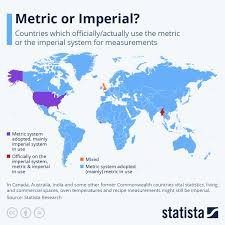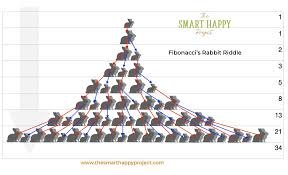March Math Imperial Madness
Subject: Math
Topic- The Metric vs. Imperial system of measurement.
I.School objective- get to the origin as to why we measure stuff and why it’s so confusing. A math mystery!
Okay, believe it or not this gets controversial. Patriots prefer Imperial over Metric. Period. Far be it for me to preach. Preferences vary, particularly proving that there is more to this story, So, lets get into it.
The metric system is a decimal-based system of measurement using units like meters, liters, and grams, while the imperial system uses units like feet, inches, pounds, and gallons, with most of the world using metric and the United States primarily using the imperial system; the key difference is that metric conversions are based on factors of 10, making calculations easier, whereas imperial conversions are often more complex and irregular. Well, thank you AI.
Imperial (adj.) having a commanding quality. Not to be confused with imperialism, a “a devotion for one specific interest group.”
Metric, from the word meter (n.) meaning “to measure.” As in the Prime Meridian. An imaginary line dividing the earth into eastern and western hemispheres. Sort of like the equator is an imaginary line dividing earth north and south. And because you gotta start somewhere, 0 (zero) degrees of separation begins in Greenwich, England.
In October 1884 the Greenwich Meridian was selected by delegates (forty-one delegates representing twenty-five nations) to the International Meridian Conference held in Washington, D.C., United States to be the common zero of longitude and standard of time reckoning throughout the world
So, what’s the problem? “The U.S. officially declared the metric system as its preferred system in 1975, but federal agencies have been slow to adopt it. Today, both systems are widely used in the United States.”
So, what’s the problem? The United States has not widely adopted the metric system because of a variety of factors, including cost, infrastructure, and history.
And, because you gotta start somewhere, Let’s start with the Imperial mile.
Mile (n.) unit of linear measure in Great Britain, the U.S., and a few other countries, formerly used in most European countries before the metric system; Old English mil, from West Germanic *milja (source also of Middle Dutch mile, Dutch mijl, Old High German mila, German Meile), from Latin milia "thousands," plural of mille "a thousand" (neuter plural was mistaken in Germanic as a fem. singular), which is of unknown origin. Etymonline.
Also, mile was a unit of time, "about 20 minutes," roughly what was required to walk a mile. “A Mile-a-minute.”
The Mile stuck, but as for the rest of the Metric system? Those Federal Agencies slow to adopt it? Historically, “Some legislators were suspicious of metric as a "foreign" influence.”
All righty then. Now, let us simply explain the Imperial system of weights and measures; excuse me, the “United States customary units.” Starting with the origin of words.
Ounce- measurement of weight or time. Unica, One, unique, as in- ‘ounce upon a time.’ See inch; 1/2 of a pound in the Troy system, but in the avoirdupois oz, three inches or 7.5 seconds, where an oz of x contrasted or compared to a pound of y.
Inch- one half of a foot; from “island” taking over land little by little, “drive of force by small degrees.”
Inch- derived from Ell, forearm, ‘elbow’ anywhere from a foot and a half to two feet which is dependent on whose arm was used; and varied with interpretation. Shoulder to finger tip, or wrist?
Foot- original word is, “to dance;” to travel, ped- “foot” equaled 13.1” sort of. Measurements varied in the 13th C.
Yard- 3 Feet or “the Ell of 45.” Originally yard/ yerd was“an enclosure, court or ship- yard. Yerd-land, yard of land, land yerd, varied in measure but often 30 acre or a quarter of a hide. Approximately 120 Acres.
Acre, “open field,”original meaning. In the United States, one acre of wheat yields about 40 bushels.
Bushels- The US bushel is based on the Winchester bushel, which is about 3% smaller than the British imperial bushel. And one bushel of wheat weighs about 60 pounds.
Pound- Various definitions have been used; the most common today is the international avoirdupois pound, which is legally defined as exactly 0.45359237 kilograms, and which is divided into 16 avoirdupois ounces. The international standard symbol for the avoirdupois pound is lb; n alternative symbol (when there might otherwise be a risk of confusion with the pound-force) is lbm[3] (for most pound definitions), # (chiefly in the U.S.), and ℔or ″̶(specifically for the apothecaries' pound). There are 8.34 pounds in a Gallon.
Avoirdupois is a system of weights based on a pound of 16 ounces or 7,000 grains, widely used in English-speaking countries. (Except the US).
The US gallon is based on the Queen Anne wine gallon, which is about 17% smaller than the British imperial gallon. The UK uses imperial gallons, which are 4.54609 liter, and The British Imperial system measures its weight in Stones 1 Pound= 0.0714286 Stone.
A Stone in an English and British Imperial unit. Abbreviated “st.” And as the story goes- An ancient Brit was walking along the beach and stabbed his big toe on a bloody big stone, sholted “Stone the Crows!”so he took the stone home and weighed it, and it weighed exactly 14 pounds (lbs), so as he happened to have been in need of a stone at that time, that's what he decided to call it.
So there you have it. An arbitrary system of numbers. Historically, an avoirdupois, a heavy weight. Massive and cumbersome to understand at its basic level. Yet, what are kids studying in Math classes today? What happens if you ask why?
Well, now onto the Metric System. Not trying to sell it, I simply want to understand it. Knowledge is power.
Metric, 5 min video
Base units: Meter (length), liter (volume), gram (mass)
Prefixes: Words like "kilo" (1000), "centi" (1/100), and "milli" (1/1000) are added to the base unit to indicate size
Easy conversion: To convert between units, simply multiply or divide by 10, 100, or 1000 depending on the prefix used.
Example:
1 kilometer = 1000 meters, 1 meter = 100 centimeters, and 1 gram = 1000 milligrams.
_______________________________________________________________________
My point is this- Math is confusing, but only because we (many many) don’t understand it. (?) And we don’t understand it because, why? Is the math taught in schools today helping kids understand math (and finance) more? Or is the math being taught-confusing, thus creating generations of “I’m not good at math,” mentality. Contradicting the posters of “Math is F.U.N.” (Please forgive me math teachers!) Math is Fun! but not by current mandated math curriculum. Big picture, is math helping kids or helping a specific interest group or groups?
And isn’t it almost cruelly ironic, that the US education system, so insistent on pushing standardization, rebels against global standardization of simple weights and measures?
Now you decide. I am choosing to learn the metric system (not necessarily like it), because I like to travel. It gives me an advantage. Simple. Base 10. I have 10 fingers and 10 toes.
Solution- take time to only understand what you need to know today, about math. Basics. Then tomorrow, build on that.
Ironic, that you will need to take time (math) to take time. Okay, that might be stretching it a bit. Now, this is about you. What do you need to know or learn? Metric, Imperial, or United States customary units. Not my place to preach. Simply provide information.
Take your time. Or someone else will. Time is money. Do you have either? Is it measurable?
Post Script: In Alice in Wonderland, can you guess which system is used in the book, linguistically (wording) in the late 1800’s? A time of Imperialism?
Relative History: In the United States, what event was happening in 1865?
Answer- the Civil War.
It was in the late 1800’s when the US began Public Schools. Compulsory, meaning required by law. What subjects do you think were first enforced Post Civil War, Reconstruction? What books do you think were used and why? Do you think states agreed on how history will be learned? Who do you think publishes text books, that states use to teach- English, math, history and science? Are they “owned” stories? What INtentions- governments; and business owners of publishing companies- might be present in curriculum? Would it be obvious?
Alice in Wonderland. A book of math and literary nonsense. Serves many purposes.
Distraction! Rabbits and Fibonacci. Want to guess what happens in March?


